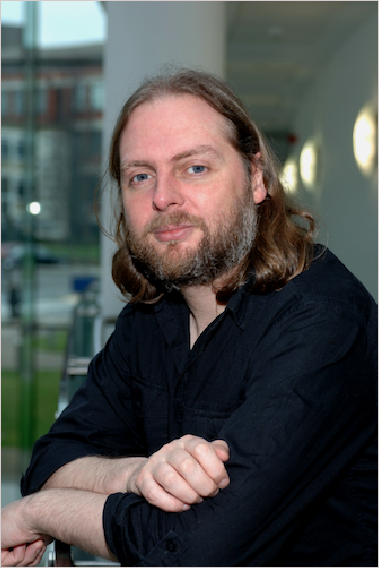Another Timbre TimHarrisonbre
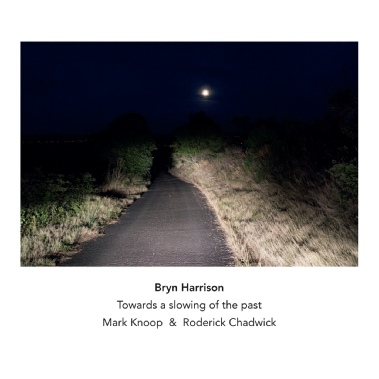
at235 Bryn Harrison ‘Towards a slowing of the past’
A mesmerising, virtuosic 45-minute work from 2023 for two pianos and electronics
Mark Knoop & Roderick Chadwick, pianos
Interview with Bryn Harrison by Marat Ingeldeev
On 15 March 2024, I made the unwise decision to attend the London premiere of Towards a slowing of the past while battling an incubating flu. Following Morton Feldman, your work seeks to disorient the listener—a goal that, needless to say, you achieved, overstimulating me well beyond what I could bear at the time. Revisiting the piece later on BBC Radio 3 and now on Another Timbre, I found it utterly mesmerising, with your use of electronic processing particularly fascinating. How do live electronics fit into your philosophy of time, memory and cyclic structures, and what role do they play in the piece?
Although I’d originally conceived of the piece as utilising live electronics, the electronic sounds heard are actually pre-recorded by Mark Knoop and played back into the space during the live performance. I’m glad you’ve asked about this though, since the use of electronics as a means of creating disorientation is certainly something I’m interested in exploring here. I began working with recorded sound in 2019 in the piece Dead Time that I wrote for the New York-based ensemble Wet Ink. In that piece, I was working with both live electronics and pre-recorded sound. I found the use of electronics offered a different perspective on time and memory than I had explored previously. Much of my previous work had focused on aspects of sameness and difference within the context of highly repetitive music performed live by the musicians. Whilst this is something I’m still preoccupied with, it is the contradictions between the fixed/representative aspects of recordings and their ‘live presence’ that I find perceptually compelling in these newer works. Recorded loops, I find, can evoke feelings of immobility, redundancy or even complete stasis in ways that are more difficult to capture through live performance. In Towards a slowing of the past, I tried to take these aspects one stage further by incorporating recorded sounds that are run backwards as well as being pitch shifted and speed adjusted. The idea came from the mechanical aspect of a reel-to-reel tape player. When the material is played at half speed it similarly sounds an octave lower. I particularly like the sound of backwards piano and the playful paradox of it still occurring forwards in time. All the backwards sounds heard in the piece are taken from the materials performed live, but the relationship between the two is difficult to discern. This adds to those aspects of disorientation that you mentioned in your question.
To my ears, the music grows progressively darker as the piece unfolds, with the relationship between the electronics and the pianos becoming increasingly complex. At one point, there’s a striking two-minute ‘interjection’ where all we hear is a sustained chord in the electronics. Is there a structural significance to this ‘pause’, and how did you conceive it?
The material traces a staggered descent to half its original speed over the course of the piece and, in the process, drops two octaves, ending exclusively in the bass register of the pianos. It was certainly my intention to make the relationship between the recorded, digital parts and the pianos more complex as the piece progressed; material gets endlessly reused and recontextualized and it becomes increasingly difficult to predict when the recorded material will enter and for how long. The two minute static chord occurs about half-way through the work at a point when the piece is beginning to slow and transition into the bass register. The static chord represents, for me, a kind of gateway into another realm. It is deliberately too long—it feels uncomfortable and somewhat out-of-place. I wanted to include material that felt alien to the rest of the work, to dramatically arrest the flow of the music, to take the listener into a different space. When we emerge from this moment of stasis, the music is slow, murky and less defined. It is from this point that the electronics begin to take on more prominence until we end in this virtual space of heavily manipulated recorded piano sounds in which the live, performed parts become almost redundant. I find, listening back, that there’s something a little bit dystopian about the ending. This is especially apparent when seeing the work live where, by the end, we are in a space that feels distinctly non-human.
Yes, I remember it was precisely that non-human atmosphere that exacerbated my flu symptoms back in March. Let’s talk about the humans behind this recording, pianists Mark Knoop and Roderick Chadwick. Did they bring any particular ideas or interpretations to the work during the rehearsal process?
I’ve been fortunate enough to work with both musicians on a number of occasions over the past twenty years. Mark and Roderick were involved in my previous works for Plus-Minus Ensemble (Rise and Repetitions in Extended Time) and Mark has performed other pieces of mine and recorded Receiving the Approaching Memory (with Aisha Orazbayeva) for Another Timbre. I feel incredibly privileged to work with musicians who know how to interpret this kind of music. Mark and Roderick had very clear ideas about tone, dynamics, sustain, and the overall balance of the piece. With a work like this, the devil’s in the detail: the writing is highly textual and requires clarity and precision and a special kind of touch. They spent time working on the articulation of the accented grace notes which are a feature of the music, gauging how much stress and emphasis should be placed on these across the various registers, as well as devising strategies for the slightly off-kilter rhythms which are tricky to read and require precision. The work demands a high degree of concentration to maintain accuracy and consistency and is difficult to pull off in performance. I am indebted to Mark for the generous amount of time he put into making the recordings for the digital playback and for the final mixing and mastering of the track which I find to be really beautiful.
Apart from both performers, the dedication extends to pianist Philip Thomas, ‘whose
playing remains an inspiration’ to you, as mentioned in the sleevenote. What is the
most important lesson you’ve learned from Philip?
I have known Philip since 2000 as a close friend, a highly-valued former colleague, and an incredible musician. We have worked together on various projects over the years, including the 76-minute solo piano work Vessels which he recorded for Another Timbre. We traveled together to places like Montreal and Barcelona and talked occasionally about a new work for two pianos. I made a few tentative sketches which I talked to Mark about as well, but nothing was developed to the stage where I felt able to show materials to the players. When Philip got ill a few years ago, I put the project on hold, revisiting it when the opportunity came up for a new piece for Plus-Minus last year. It was important to me to honour Philip since the project would never have come about without his early encouragement. His playing is somehow always in the background when I write: it complements my approach to composing for the piano, which is primarily about pitch, tone and register. I guess the most important lessons I learnt from him came from listening to his sound: namely, to never forget about the aspect of touch and sensuality when writing for the piano. I also remember him once saying that all you need in life is love and curiosity, which is a lesson for us all!
Thank you for sharing this: it’s a great reminder that humans have this wonderful ability to cross-pollinate and inspire one another. On another note, there’s a question I’m burning to ask. Your 2013 book, Overcoming Form: Reflections on immersive listening, co-written with Richard Glover, uses a term that has since become a buzzword in art and music circles, to the point that it often feels devoid of meaning. I suspect, however, that you have a more nuanced take: what does ‘immersive’ listening mean to you?
At the time, Richard and I were very interested in long experimental works that seem to envelop the listener. The title, Overcoming Form, referred to a comment that the late musicologist Bob Gilmore had made about those long, late works by Feldman, which exceed the limits of memory, where the boundaries of form are out-of-sight. So quite a few of the pieces that we looked at in the book had those qualities whereby the listener feels surrounded by the work so-to-speak. I’m aware that the term ‘immersive’ has taken on a slightly different meaning over the last decade, so the sub-title of the book may not seem so appropriate now.
Nevertheless, I find that this particular type of listening—whatever ‘immersive’ might mean to each of us—often enriches my experience of music, even when the material itself isn’t explicitly concerned with that quality. Has your fascination with long experimental works ever led you to hear a piece of more traditional music in a completely new way?
Just to comment first on what you said about musical immersion enriching the experience: my aim in a lot of my work is to envelop the listener over time. Towards a slowing of the past seeks to do this, but it is also a quality that I have explored in many earlier works including Repetitions in Extended Time, Receiving the Approaching Memory and A Coiled Form. These pieces begin at a speed and density that makes it difficult to apprehend all the details upon first hearing them, but through a process of repetition there’s the chance to get more involved with the sonic qualities of the music over time. Hopefully, this leads to the more enriching experience that you describe. Working with long form works has led me to appreciate music in a very different way. I remember that quote from Feldman—that all forms in music are essentially memory forms. This becomes abundantly clear when listening to works of extended duration; when materials come back (sometimes after a considerable amount of time has elapsed) they are essentially recontextualised—their qualities have changed. Hearing a musical reprise offers a different listening experience to hearing that material the first time around. Being aware of this has changed the way I listen to music. I’m now more aware that my appreciation of music—be it, for instance, a piece of Baroque music, electronic music or Javanese Gamelan—is in some way governed by my memory and sense of expectation. Taking this thinking into my recent compositional work, I am trying to navigate paths through the many possibilities that are available to me, to take the listener on a journey that hopefully has some kind of transformative qualities. I think, in a post-Cageian society where all sounds are available to us—including noise and environmental sounds—it might be the form that a piece takes that offers the greatest potentials for exploration. There are so many structural possibilities available to the composer and I’m not sure that they’ve all been exhausted yet. I'm interested to see where this might take me in my work.
Bryn Harrison
Previous releases by Bryn Harrison
Click on covers for more information
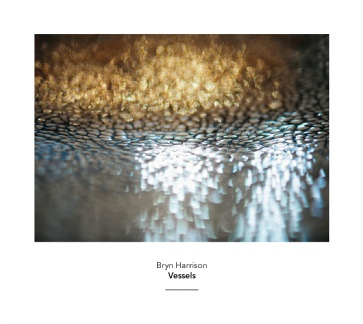
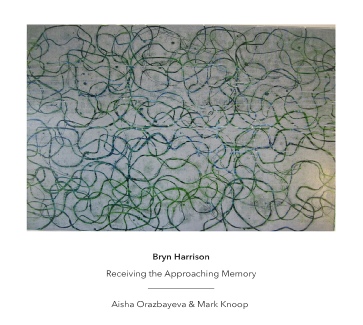
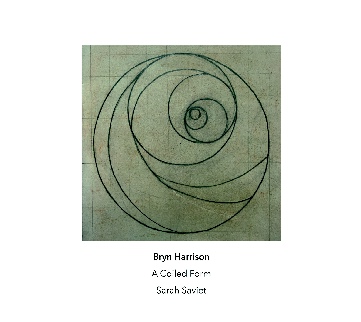
at69 ‘Vessels’ Philip Thomas, piano solo
at96 ‘Receiving the Approaching Memory’ Aisha Orazbayeva, violin Mark Knoop, piano
at201 ‘A Coiled Form’ Sarah Saviet, violin
